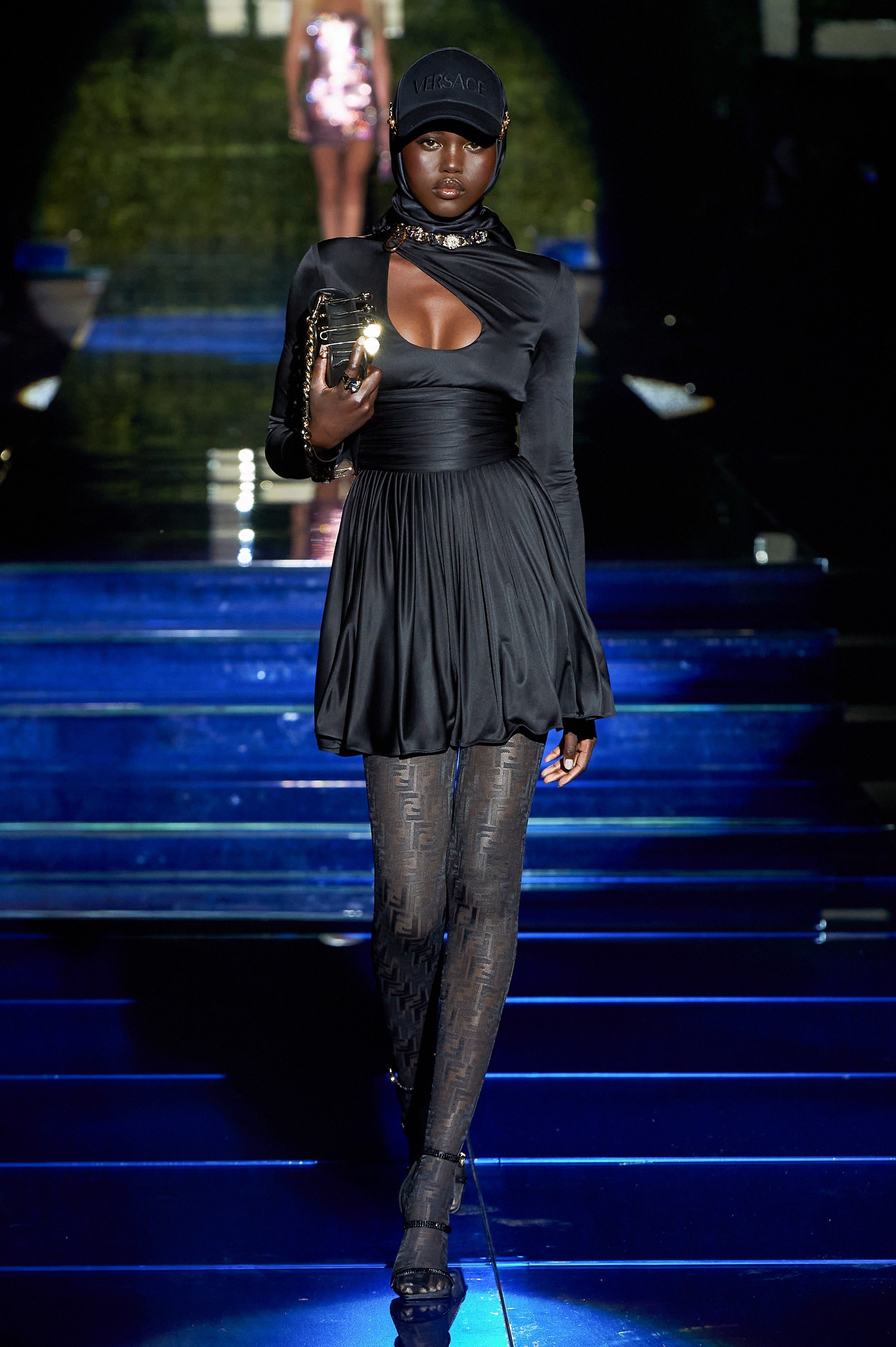Luxury Squared: High Fashion Partnering With Itself
Collabs are far from being newbies on the High Fashion scene. Every giant of the industry has given it a try. We’ve seen the fast fashion collab when H&M partnered with high fashion houses, starting from Karl Lagerfeld in 2004, then Versace (2011), and Maison Martin Margiela (2013).
We’ve also seen the sportswear collab (Adidas by Stella McCartney), the streetwear collab (see the iconic LV and Supreme collection), and the influencer collab (recently we’ve had Fendi x Skims).
An emerging trend however, seems to be that of luxury houses collaborating between themselves. Gucci and Balenciaga’s Hacker Project was made available just last week, and the Versace by Fendi followed by the Fendi by Versace show that closed the latest Milan Fashion Week are the first examples of this phenomenon.
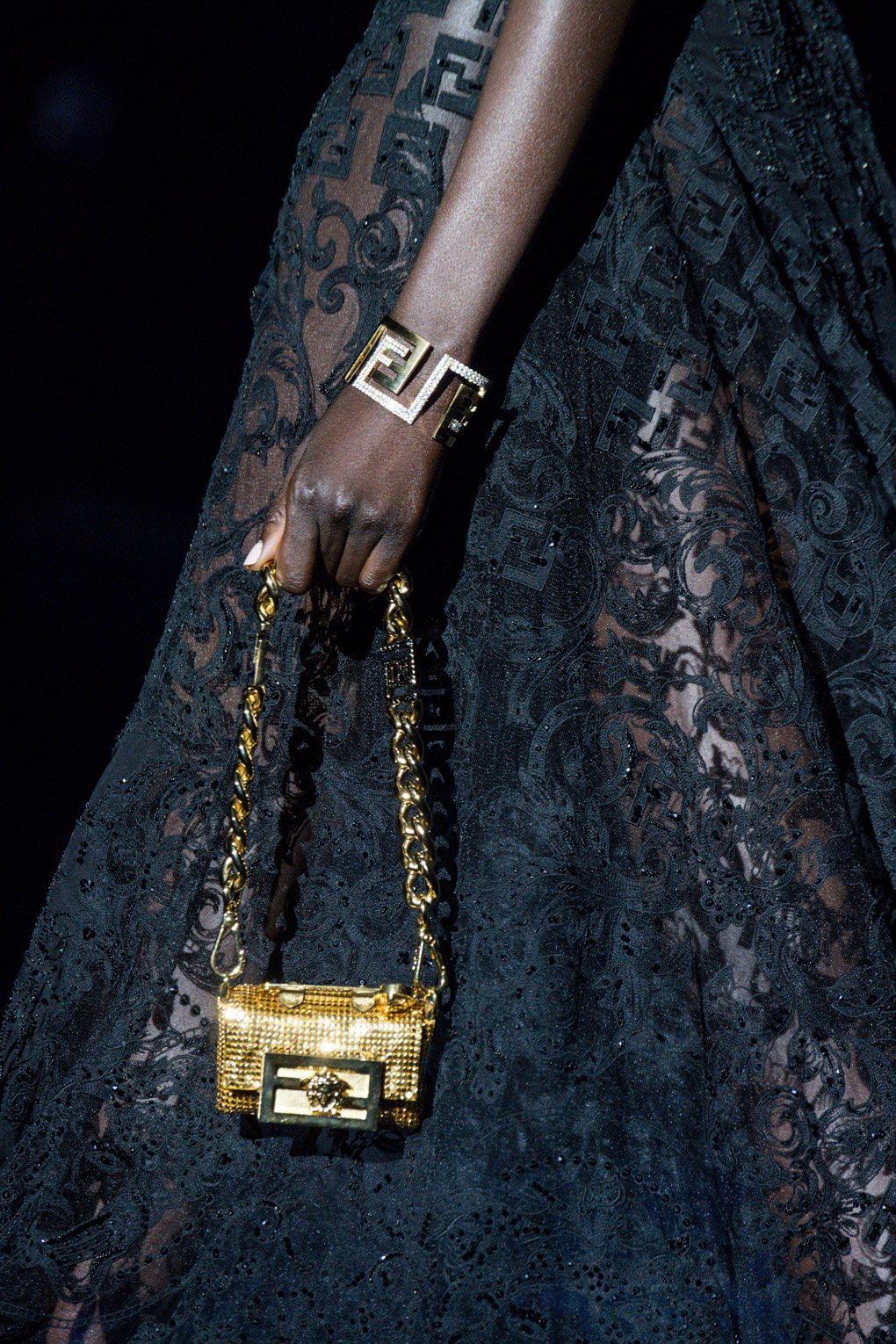
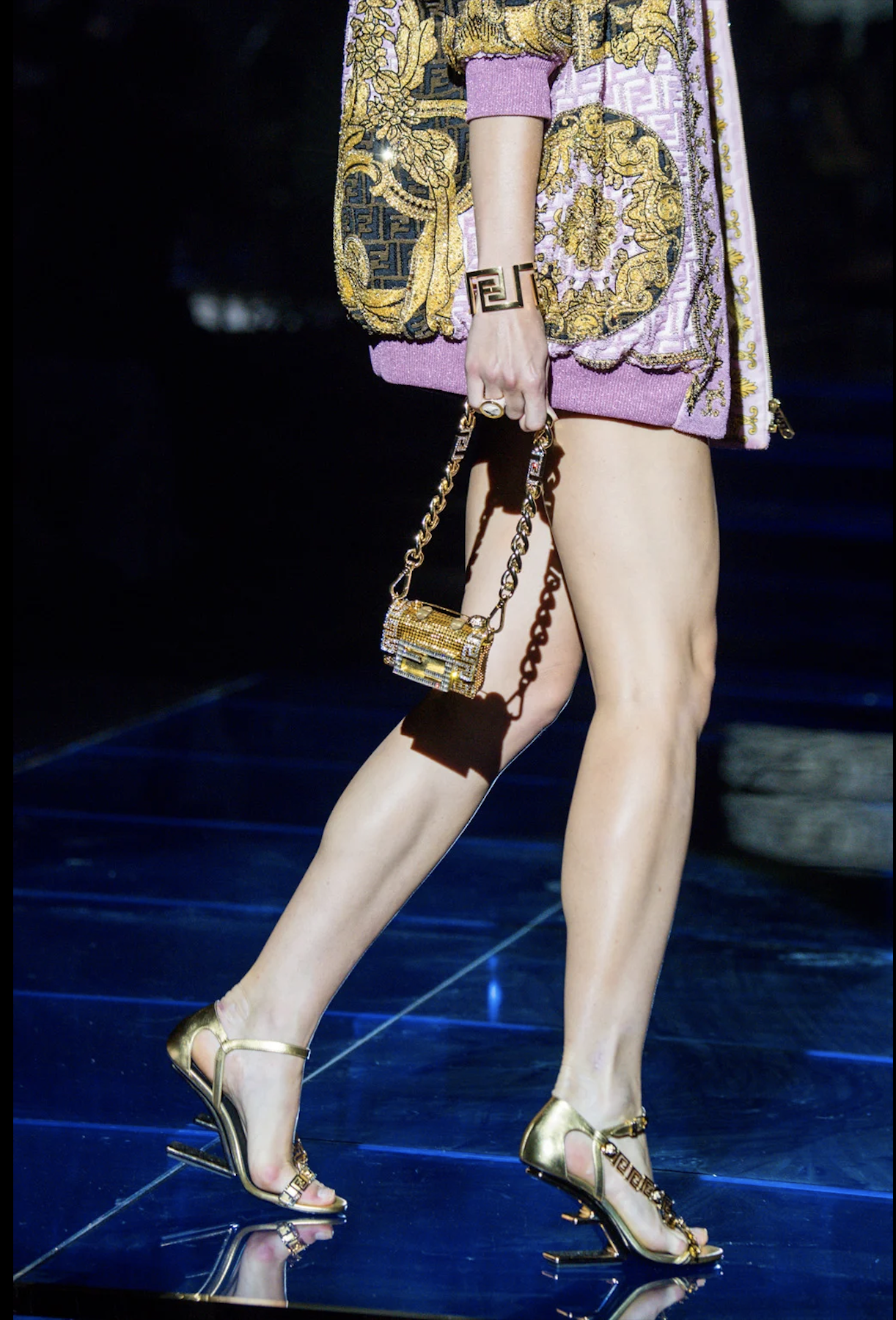
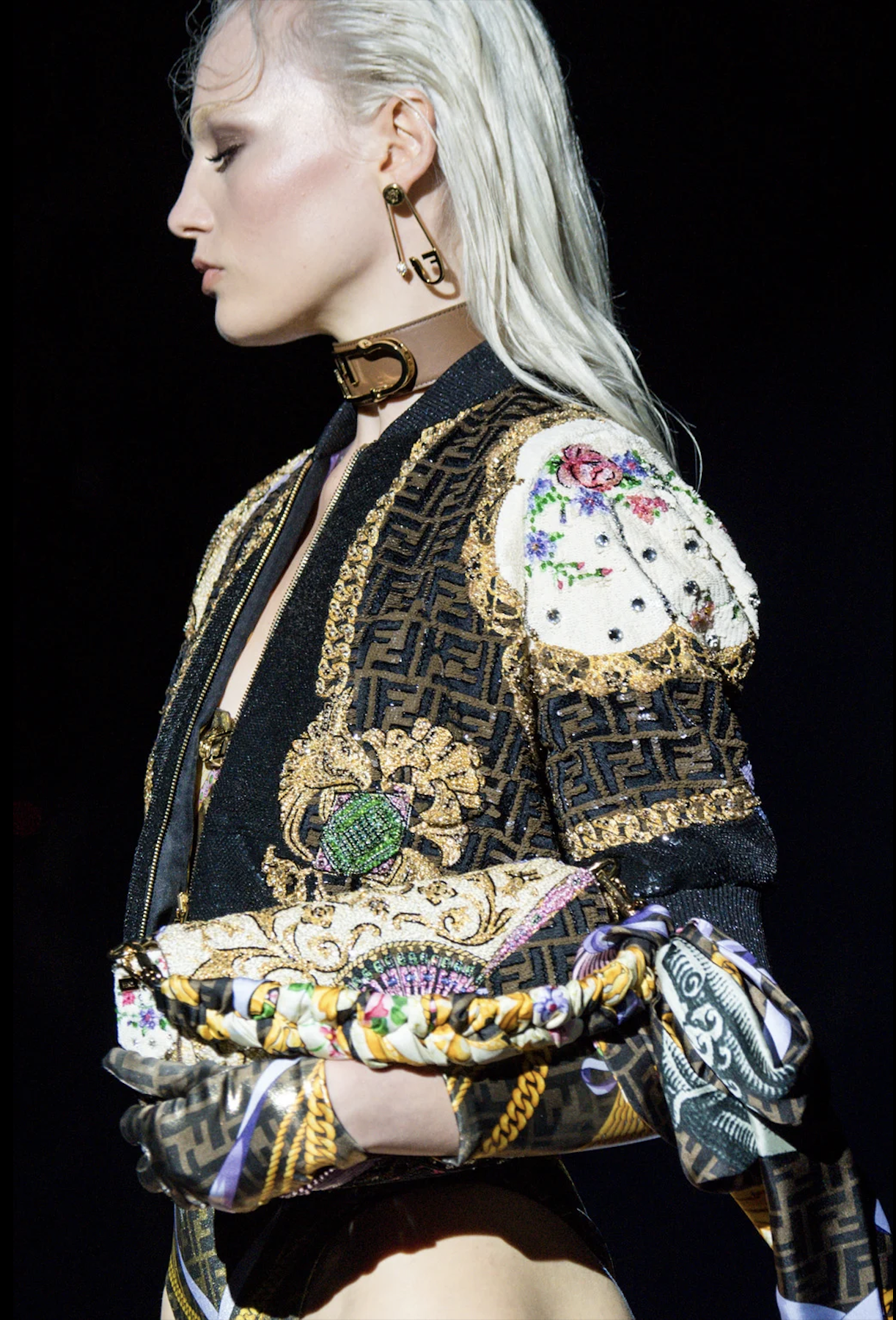

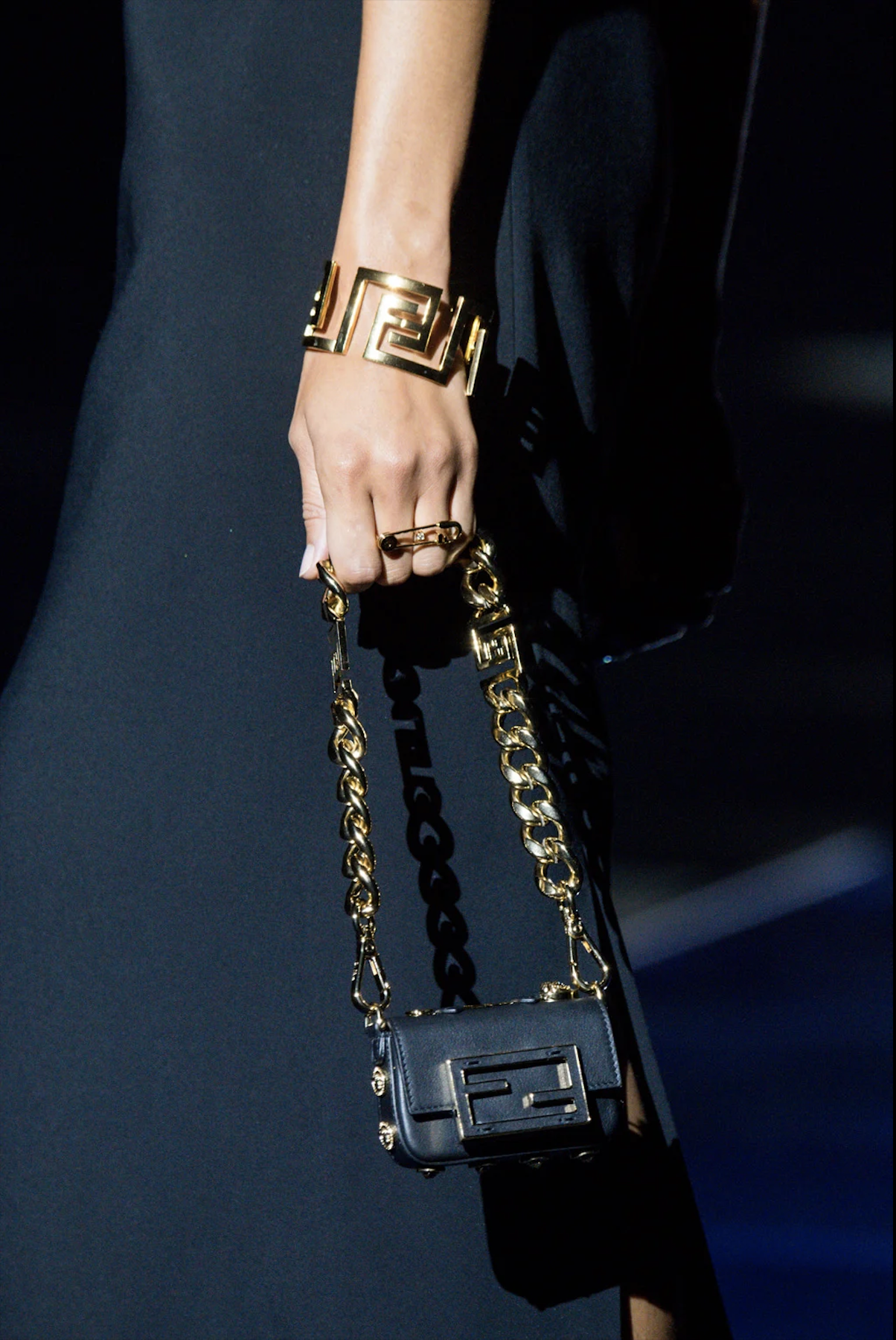

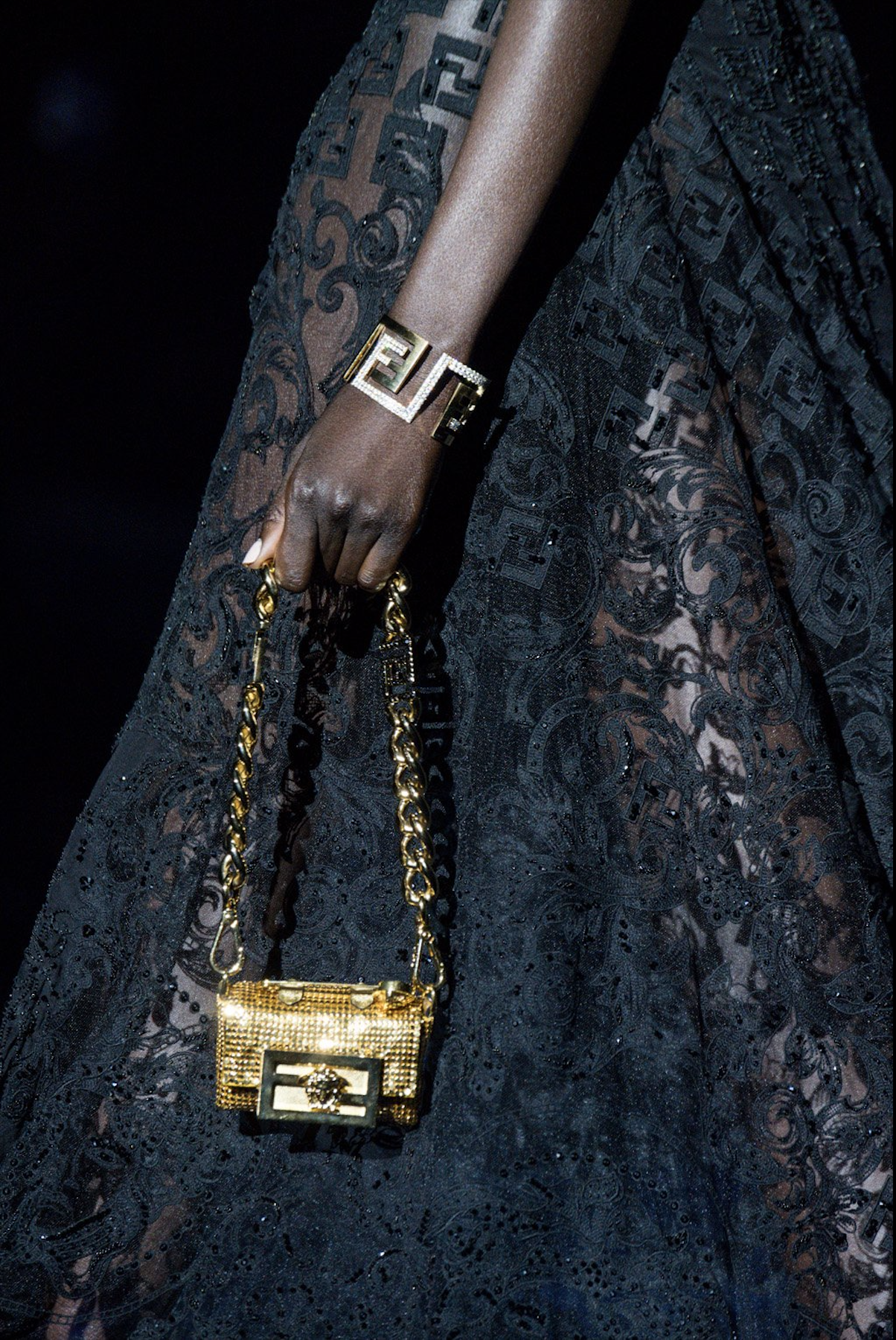
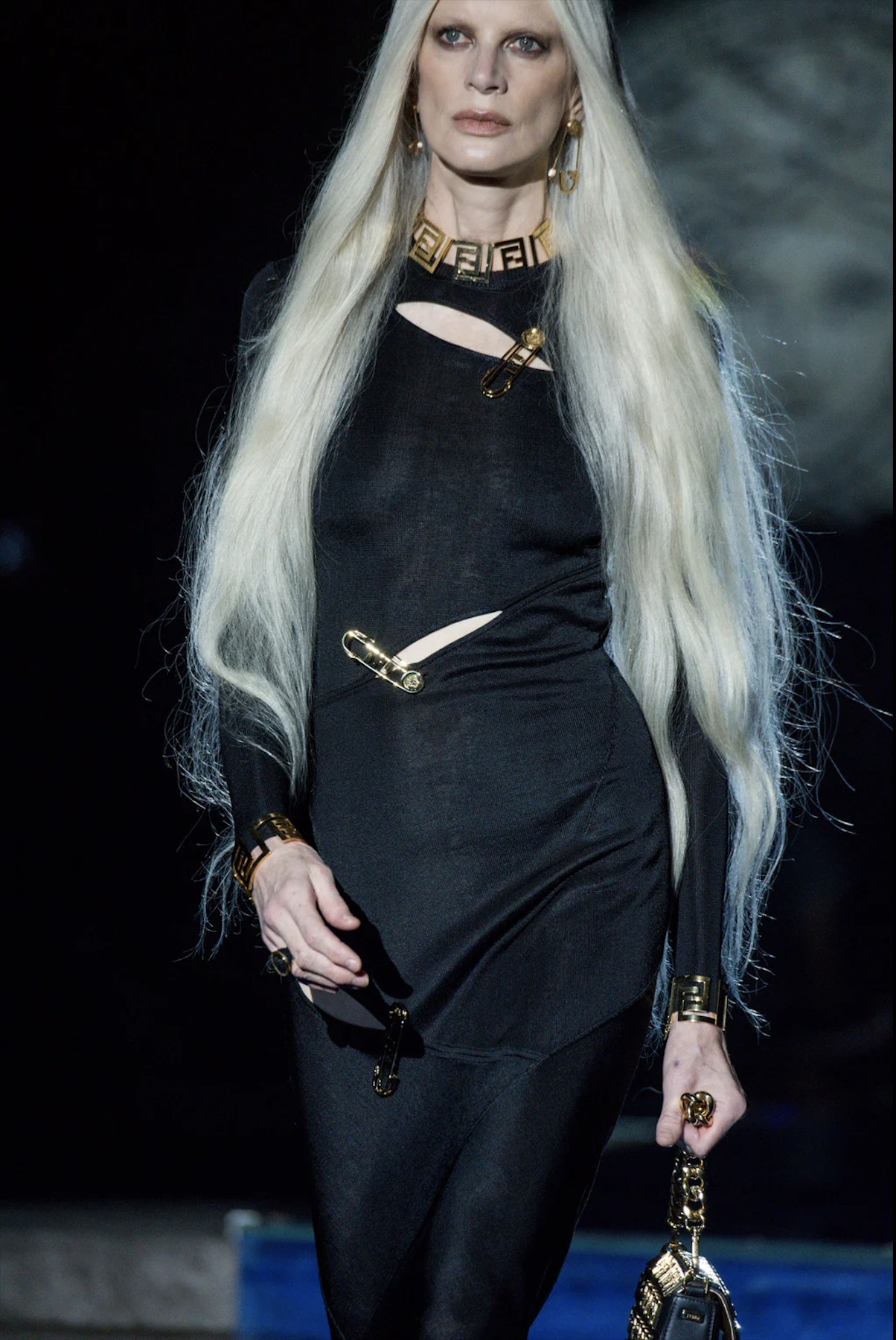
Details from Versace by Fendi
Luxury is about exclusivity and uniqueness but it is also about being coveted.
By their nature, collabs are ephemeral and unreplicable, they play with a certain ‘gotta have it’ factor and that is why they fit perfectly into the High Fashion world.
Collaboration is primarily a re-contextualisation tool.
Besides using it to reframe the audience’s perception of the brand, collabs can ensure pricing power and create cultural relevance – something all brands look for in our rapidly-evolving digital world. Collabs are also useful gauges to test new directions and to evaluate consumers’ wants and needs by examining their reactions. It allows brands to try new things out, produce something refreshing without too big of a risk.
Finally, collabs allow brands to grow their customer base and to merge audiences: younger generations do not define goods as luxury simply because of their high prices and large margins anymore. Instead, the quality and exclusivity of the product have become the defining characteristics of luxury, along with the hype.
With such big importance being given to reputation, the risk of collabs is instead that they can erode brand image if the pairing seems gauche or ungraceful.
This past season was the first to be held in person in over a year and a half. This led to an unprecedented season with brands wanting to mark it by grandness. It also coincided with Gucci’s centenary – an occasion worth celebrating.
The Hacker Project - bringing a partnership between Kering’s Gucci and Balenciaga - was an unprecedented move in the industry. This collab reminds us of Demna Gvasalia’s taste for creative unions as shown in his 2016 collection for Vetements where the brand partnered with 18 brands. Back then, Vetements collabed with brands known for their expertise – Levi’s, Dr. Martens, Canada Goose, Juicy Couture, Kawasaki, and Brioni amongst others.
THE IDEA WAS ALWAYS TO TAKE THE ICONIC, THE MOST RECOGNIZABLE PRODUCT FROM THEIR BRAND, AND PUT IT INTO A VETEMENTS FRAME, WHETHER IN TERMS OF SHAPE OR CONSTRUCTION
- DEMNA GVASALIA
This type of collab made sense since it allowed for an outcome that could only be obtained by combining the different brands’ unique savoir-faire.
More than a simple merger of the two houses’ DNAs, the Hacker Project on Gucci’s side – Gucci Aria - felt like a true experimental lab, full of - but not overcharged by - references and homages in a pure Michele fashion. I’m obsessed, as you may know, with bringing the past back and transform it into a living and vibrant present. He said.
The project perfectly combined Alessandro Michele’s playfully quaint feel with Demna Gvasalia’s underground confidence.
We saw norm-core Balenciaga corporate wear and Gvasalia’s stiff maxi shoulders Gucci-fied with feathers, sparkles and sequins, a reworked double G into a double B logo, blazers, skirts, and purses decorated with Balenciaga and Gucci emblems. We observed Gucci’s dreamy and playful colour palette augmented with Balenciaga’s royal blue.
On Gvasalia’s side of the Hacker Project, the Balenciaga clones SS22 collection was in fact centred on how technology alters our sense of reality. The collection note states:
We see our world through a filter- perfect, polished, conformed, photoshopped. We no longer decipher between unedited and altered, genuine and counterfeit, tangible and conceptual, fact and fiction, fake and deepfake. Technology creates alternate realities and identities, a world of digital clones
The film, directed by Quentin Deronzier, clones model and artist Eliza Douglas to model all of the looks on a minimal runway, with Edith Piaf’s La Vie en Rose recited by an AI voiceover as background.
A number of Balenciaga signatures were included in this collection – puffers and parkas, tracksuits in various styles and functionalities, deconstructed tailoring, etc. – with hints of Gucci stripes and motifs.
The now well-known This is not a Gucci bag was also featured - a reference to Magritte’s Treachery of Images, ‘Ceci n’est pas une pipe’? It would tie in with Balenciaga’s statement, declaring to work on the questions of authenticity, counterfeiting and the blurred frontier between reality and fiction.
Born from the wish to celebrate the return of live audience shows and the beauty of togetherness in Kim Jones’ words, the Fendi x Versace swap was another partnership between luxury giants to appear this year. Each of the heritage Italian brands opened up their archives and iconography to be interpreted by each other’s creative leads.
The collection worked around the idea of duality as seen by the merging of the two houses’ emblems – Fendi’s monogram and Versace’s key - also touching upon a multi-generational feel emphasized by a cast of 30 years of fashion muses. The Versace by Fendi collection was deeply inspired by the 90s while the Fendi by Versace was inspired by punk- rock, glammed a la Versace. Bold and shameless. Grandiose and boastful. A glorious excess.
What came out of the partnership is a jumble of emblems. Luxury is defined by a balance between heritage and innovation. Was there much heritage for too little innovation? It definitely tended towards a 2 logos for the price of 1 deal.
What differentiated the Hacker Project from Fendace is probably that Gucci and Balenciaga have easily identifiable signatures other than their respective logos. Fendi’s DNA is in part its use of fur and leather which was not at all exploited in this collection. Other than its monogram, no signatures were striking enough, and it felt like Versace’s emblems overtook both collections.
On the other hand, The Hacker Project held back on the logomania and instead also focused on easily recognisable colour palettes or iconic cuts. Both parts of the Hacker Project still eminently felt like Gucci and Balenciaga respectively. Fendi and Versace’s swap felt like Versace on a Fendi monogram background.
In both cases, the houses steered clear of the term ‘collaboration’. By making a clear point of avoiding it, they underline that the house’s designers did not sit together to create collections together but rather explored the idea of appropriation in fashion, as if they borrowed each other’s codes and archives.
Fendi by Versace













